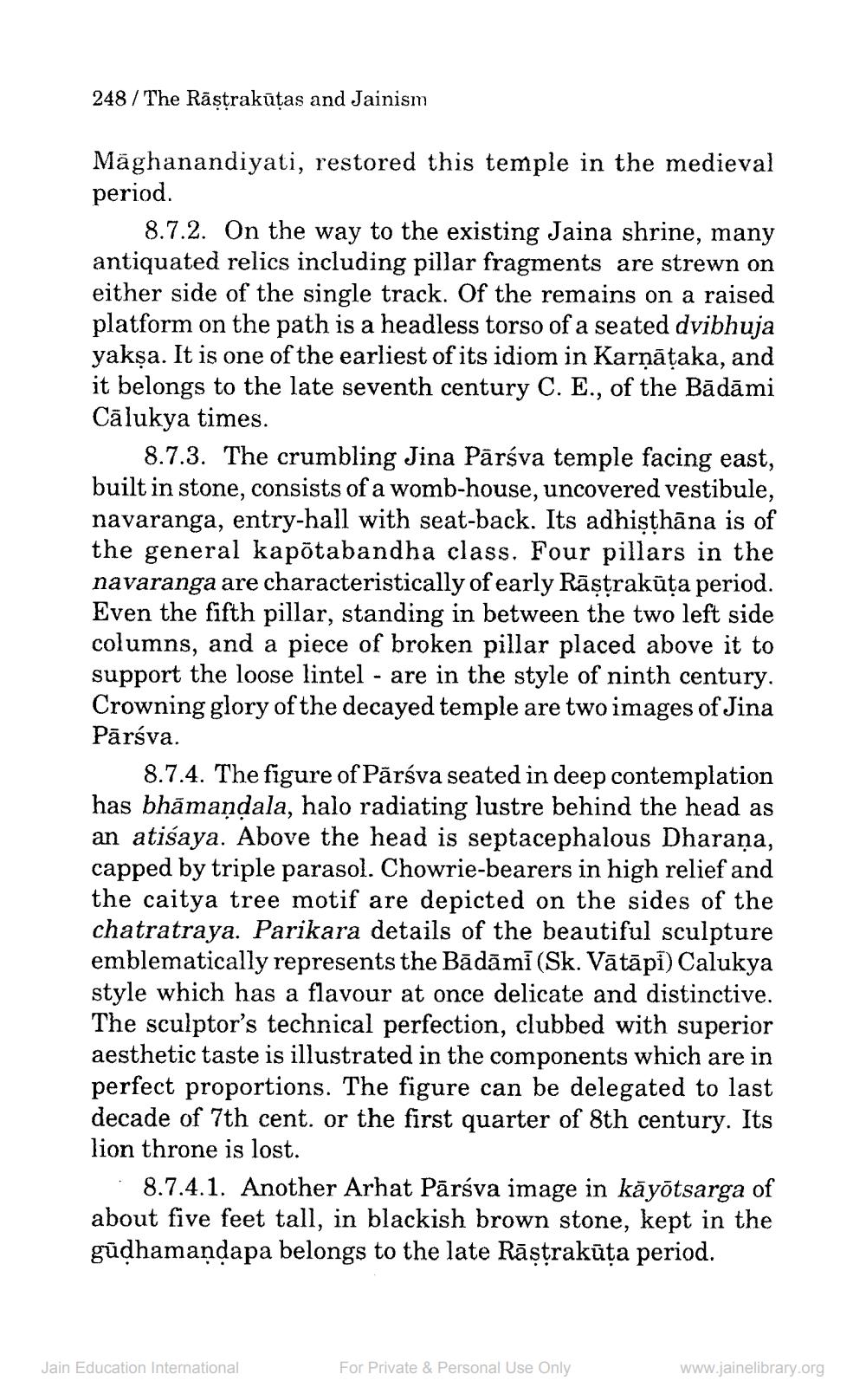________________
248/The Raṣṭrakūtas and Jainism
Mäghanandiyati, restored this temple in the medieval
period.
8.7.2. On the way to the existing Jaina shrine, many antiquated relics including pillar fragments are strewn on either side of the single track. Of the remains on a raised platform on the path is a headless torso of a seated dvibhuja yakṣa. It is one of the earliest of its idiom in Karṇāṭaka, and it belongs to the late seventh century C. E., of the Bādāmi Calukya times.
8.7.3. The crumbling Jina Parsva temple facing east, built in stone, consists of a womb-house, uncovered vestibule, navaranga, entry-hall with seat-back. Its adhiṣṭhāna is of the general kapōtabandha class. Four pillars in the navaranga are characteristically of early Raṣṭrakūta period. Even the fifth pillar, standing in between the two left side columns, and a piece of broken pillar placed above it to support the loose lintel- are in the style of ninth century. Crowning glory of the decayed temple are two images of Jina Pārśva.
8.7.4. The figure of Parsva seated in deep contemplation has bhāmaṇḍala, halo radiating lustre behind the head as an atisaya. Above the head is septacephalous Dharaṇa, capped by triple parasol. Chowrie-bearers in high relief and the caitya tree motif are depicted on the sides of the chatratraya. Parikara details of the beautiful sculpture emblematically represents the Bādāmi (Sk. Vātāpi) Calukya style which has a flavour at once delicate and distinctive. The sculptor's technical perfection, clubbed with superior aesthetic taste is illustrated in the components which are in perfect proportions. The figure can be delegated to last decade of 7th cent. or the first quarter of 8th century. Its lion throne is lost.
8.7.4.1. Another Arhat Pārśva image in käyōtsarga of about five feet tall, in blackish brown stone, kept in the gudhamandapa belongs to the late Rāṣṭrakūṭa period.
Jain Education International
For Private & Personal Use Only
www.jainelibrary.org




